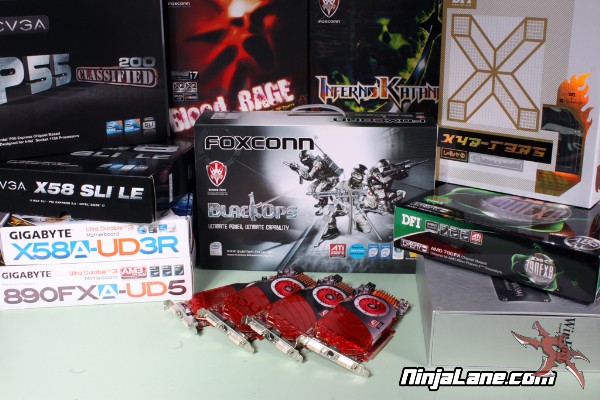After careful consideration I have decided to transfer all hardware review activities to a new domain. I purchased Hardwareasylum.com in 2012 and have been working hard to build a new and improved Ninjalane on that domain. If you are reading this you have reached one of the archived articles, news, projects and/or reviews that were left behind during the site migration.
Please update your bookmarks and be sure to visit the new and improved Ninjalane at Hardwareasylum.com
Introducing the Multi-GPU Index
Author: Dennis Garcia
Published: Thursday, December 02, 2010
The Multi-GPU Index Explained
The Multi-GPU index is a portable set of data that we can assign to determine the multi-gpu potential of any motherboard. A higher index number indicates a favorable condition for multiple graphics cards while a lower number indicates a hindrance in one of our leading indicators. Since the Index does not take into consideration system architecture it can be applied to motherboards regardless of processor or chipset generations.
The data collected for each motherboard will consist of:
The data collected for each motherboard will consist of:
- Overall Multi GPU Index
- PCI Express slot layout (This will show you what each 16x card slot is doing as more and more cards are installed)
- n card optimized (This is to indicate the best performance configuration regardless of support)
- n card maximum (This will indicate how many graphics cards the board will support regardless of overall performance)

Motherboards in this Article
- Foxconn Quantum Force BloodRage
- EVGA X58 SLI LE
- Gigabyte X58A-UD3R
- Foxconn Quantum Force Inferno Katana
- EVGA P55 Classified 200
- DFI LanParty UT X48-T3R
- Foxconn Quantum Force BlackOps
- Gigabyte GA-890FX-UD5
- DFI LanParty DK 790FXB
- Foxconn Winfast NFPIK8AA
Video Cards in this Article
We will be using the ATI Radeon HD 4850 512MB graphics card for the purposes of testing. As you may know these are not the latest video cards you can buy but they have some unique features that are key to making this article work.
- Single slot coolers: while dual slot cooling solutions are more popular we needed a card with a minimal footprint due to the slot layout on some motherboards.
- Support the PCIe 2.0 standard
- Ability to run in QuadFire (quad gpu) configurations.

